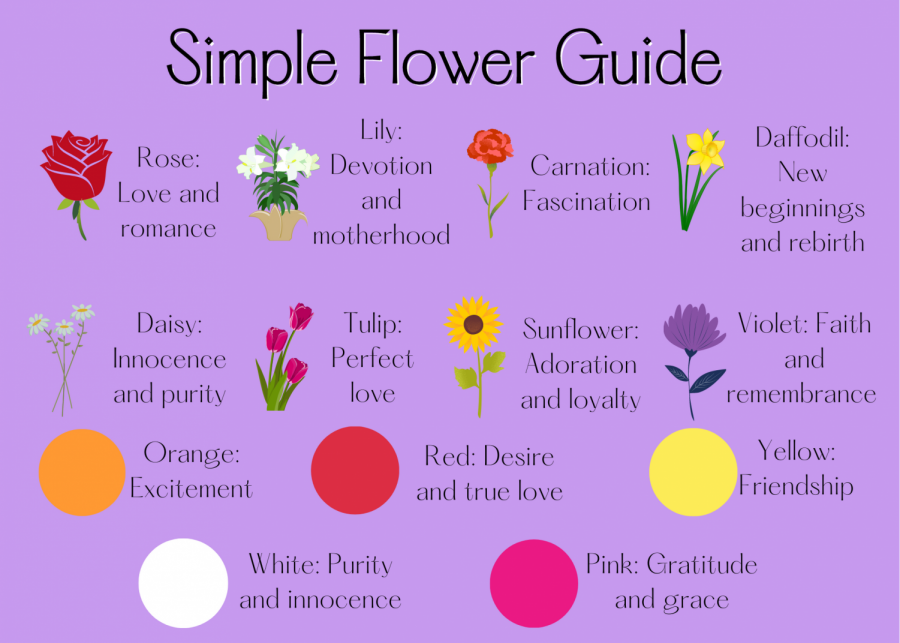Unearthing the language of flowers
January 14, 2021
Quarantine was a time for people to explore new hobbies, including taking care of and learning about plants. Caring for plants was an easy way to have something to do that didn’t need a lot of attention. Since quarantine stated in the spring, it was prime flower growing time, which sparks the question: what do certain flowers even mean?
Using flowers as a way to express feelings and emotions is an art that has been done for centuries. According to English-Heritage.org the “language” of flowers grew immensely in popularity in the 19th century.
Multiple books, known as floriographies, were published which were essentially dictionaries that detailed what each flower meant. One of the first people to determine the meaning of flowers was a British botanist named Henry Phillips. Many writers, including Phillips, drew on Shakespeare when determining which flowers meant what and from there the supposed meanings grew as each flower was interpreted differently by different people.
Colors of flowers also held important significance. Roses, for example, are seen as a flower of love, but while a red rose is seen as utmost admiration, a yellow rose is used to symbol friendship.
Even in the 19th century the language of flowers was seen more as a parlor game than a real form of communication, but there is something much more interesting about decoding the meaning of a bouquet of flowers than receiving a letter.
As the world has gotten more technological, it is more convenient to send a text message or have a phone call than it is to send someone flowers, but receiving flowers can be more personal and is a physical reminder that someone is thinking of you. With Valentine’s Day coming up try sending flowers to someone special and use this easy guide to decide on the message!

